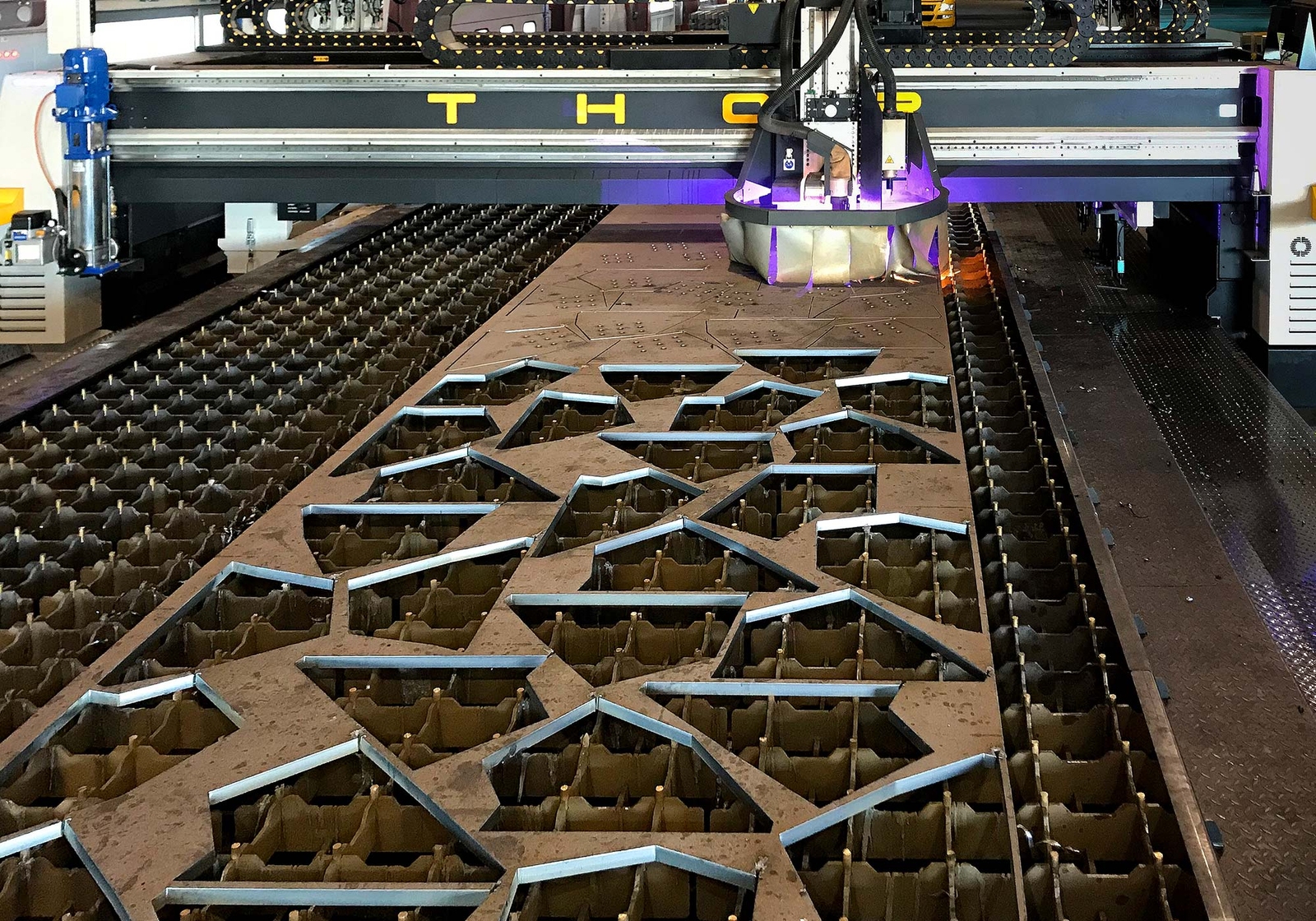Advanced Steel Fabrication Melbourne: Building the Future Today
Advanced Steel Fabrication Melbourne: Building the Future Today
Blog Article
Innovative Fads in Steel Construction: Enhancing Longevity and Accuracy
In the world of steel construction, the pursuit of durability and precision has actually led to a wave of innovative patterns that are reshaping the sector. These patterns are not just shaping the existing but likewise laying the groundwork for the future of steel manufacture, guaranteeing further enhancements in longevity and precision.
Advanced Welding Technologies
In the world of steel fabrication, the fostering of cutting-edge welding modern technologies has actually significantly revolutionized the market's method to attaining exceptional quality and accuracy in architectural welds. Advanced welding technologies, such as laser beam welding and rubbing mix welding, have actually emerged as game-changers in the field. Laser beam welding uses a focused laser light beam to sign up with metal components with impressive precision and speed, making it optimal for complex designs and slim products. On the other hand, friction mix welding develops unbelievably strong bonds by mechanically intermixing the particles of the materials at the joint, removing the need for thawing the metal. These technologies offer many benefits, including minimized heat-affected zones, very little distortion, and improved mechanical residential or commercial properties in the bonded joints. By leveraging these innovative welding methods, steel fabricators can boost the longevity, strength, and accuracy of their architectural welds, satisfying the progressively demanding demands of contemporary building projects.
Robot Automation in Fabrication
Welcoming robotic automation has actually come to be a foundation of modern steel construction methods, improving and streamlining processes effectiveness throughout the market. Robots are reinventing the method steel components are produced, supplying unrivaled accuracy and speed while minimizing human error. These automated systems can handle repeated tasks with regular accuracy, leading to higher high quality final product.
One trick benefit of robotic automation in steel manufacture is the ability to function all the time without tiredness, dramatically boosting production outcome. This continual operation lessens downtime and accelerates project timelines, inevitably saving prices for manufacturers. In addition, robotics can be set to execute elaborate jobs that may be unsafe or difficult for human employees, boosting safety in the workplace.
Additionally, robot automation makes it possible for smooth integration with other electronic innovations, such as computer-aided design (CAD) software program and Internet of Points (IoT) systems (metal fabrication melbourne). This interconnected technique enhances interaction in between different stages of fabrication, enhancing process and making certain real-time surveillance and control. As the steel manufacture industry remains to advance, robotic automation stands apart as a transformative force driving effectiveness and accuracy in producing procedures

High-Strength Alloy Development
The innovation of high-strength alloy development in steel fabrication is improving the sector's strategy to enhancing product toughness and performance. High-strength alloys are crafted to display exceptional mechanical residential properties, such as increased tensile stamina, toughness, and deterioration resistance contrasted to typical steel qualities. By incorporating these advanced alloys into manufacture processes, manufacturers can produce elements that stand up to greater anxiety degrees and extreme atmospheres, bring about even more sturdy and dependable final product.
One trick benefit of high-strength alloy development is the ability to decrease product thickness without jeopardizing structural stability. This not only causes lighter-weight components yet likewise adds to cost savings and improved performance in construction and assembly processes. The boosted strength-to-weight proportion of these alloys permits for the design and construction of structures with greater load-bearing capabilities while lessening general weight.
3D Modeling and Simulation Software Application
Improvements in steel fabrication procedures have been substantially moved by the assimilation of innovative 3D modeling and simulation software devices. These devices allow producers to produce comprehensive online designs of their tasks, allowing them to picture the final item with accuracy before any type of physical work starts.

Lasting Practices in Steel Production
Including sustainable practices into steel manufacturing procedures is necessary for minimizing environmental influence and ensuring lasting resource schedule. One crucial sustainable practice is the fostering of energy-efficient innovations to lower greenhouse gas exhausts during the steel manufacturing procedure. This includes making use of renewable resource sources, such as solar or wind power, to power steel plants and implementing energy-efficient tools to maximize power use.
One more vital element of sustainable steel manufacturing is the responsible sourcing of basic materials. This entails ensuring that the iron ore and various other resources made use of in steelmaking are acquired from ethical and eco-friendly sources. By advertising openness in the supply chain and sticking to stringent ecological standards, steel producers can decrease the unfavorable effects of source extraction on regional ecological communities and neighborhoods.

Verdict
Finally, the innovative trends in steel fabrication such as sophisticated welding modern technologies, robotic automation, high-strength alloy advancement, 3D modeling and simulation software application, and sustainable practices are enhancing the longevity and accuracy of steel products. These innovations are transforming the steel fabrication industry by enhancing sustainability, performance, and high quality. It is clear that the future of steel construction lies in accepting these innovative innovations to satisfy the demands of modern building and manufacturing industries.
In the realm of steel fabrication, the pursuit of durability and precision has actually led to a wave of cutting-edge patterns that are improving the market.In the world of steel fabrication, the fostering of advanced welding modern technologies has significantly changed the industry's technique to achieving remarkable top quality and recommended you read precision in structural welds. As the steel construction market continues to progress, robot automation stands out as a official statement transformative force driving performance and precision in making processes.
In addition, recycling and recycling steel scrap and waste products play a significant function in improving the sustainability of steel manufacturing. metal fabrication melbourne.In verdict, the cutting-edge fads in steel fabrication such as innovative welding technologies, robotic automation, high-strength alloy development, 3D modeling and simulation software, and sustainable techniques are enhancing the longevity and precision of steel products
Report this page